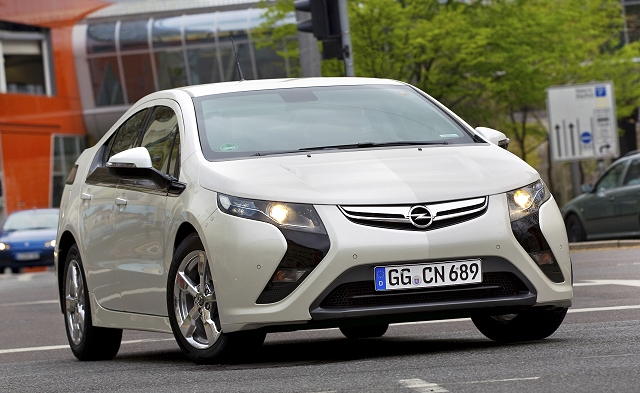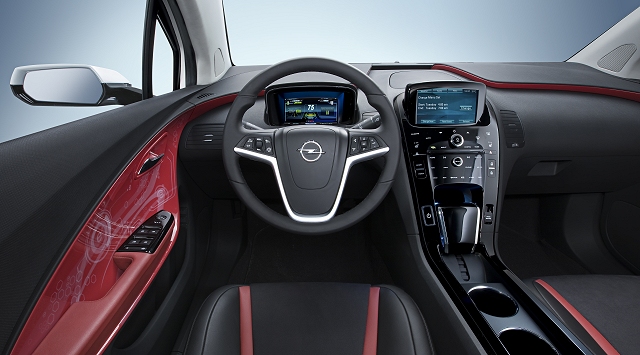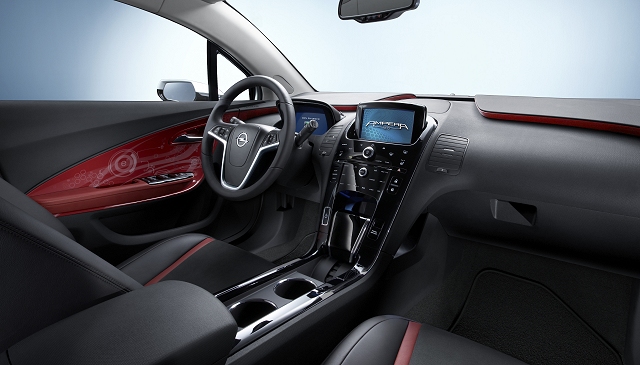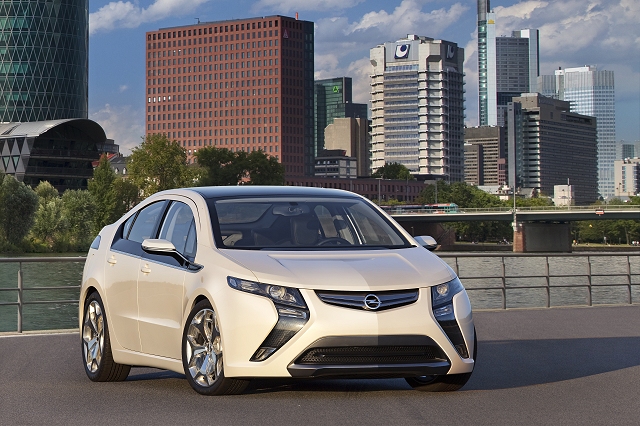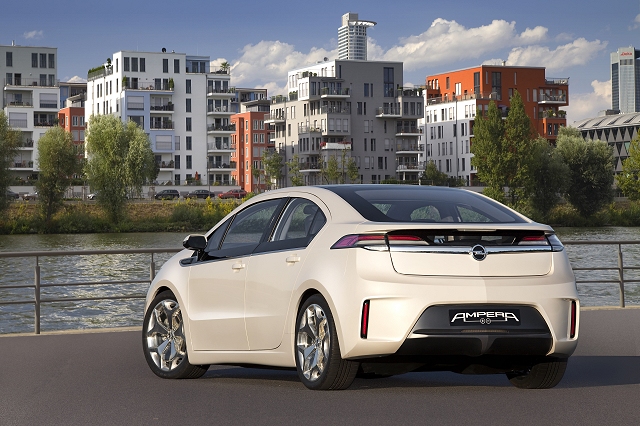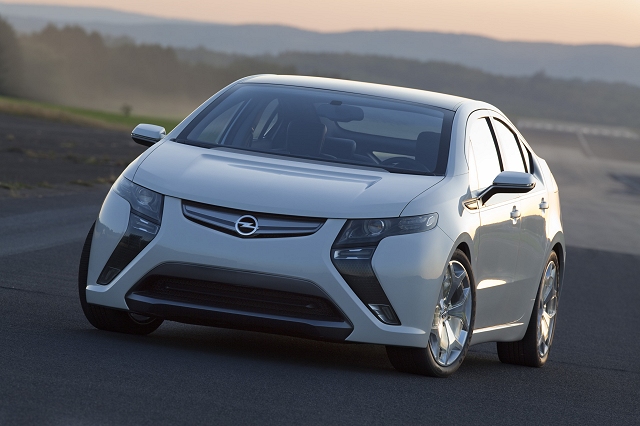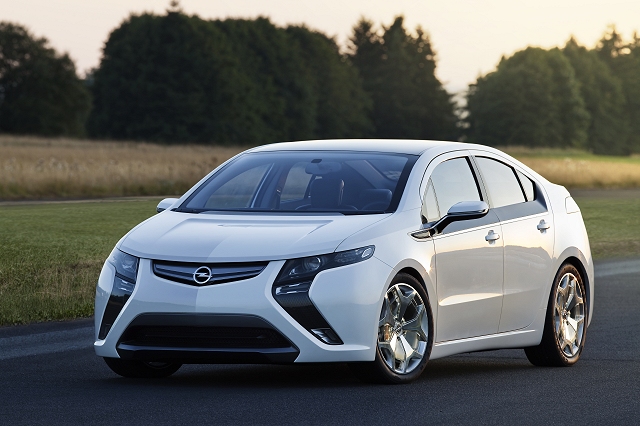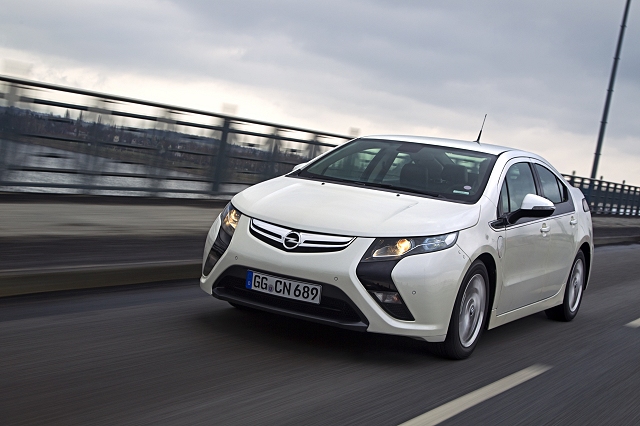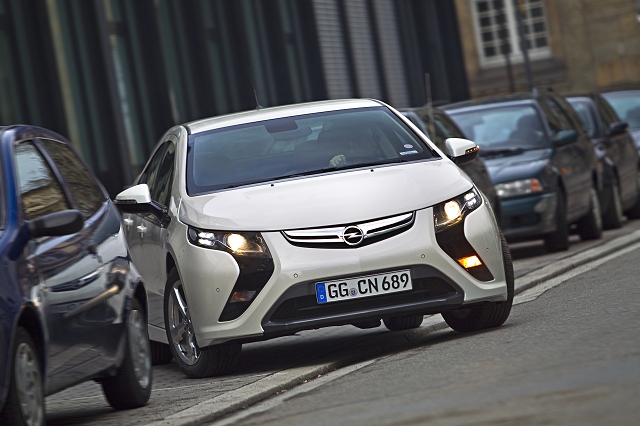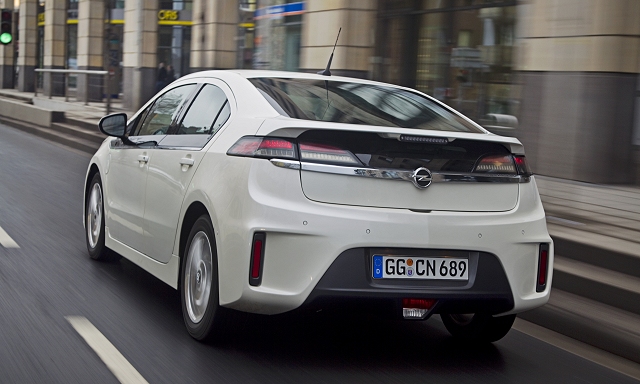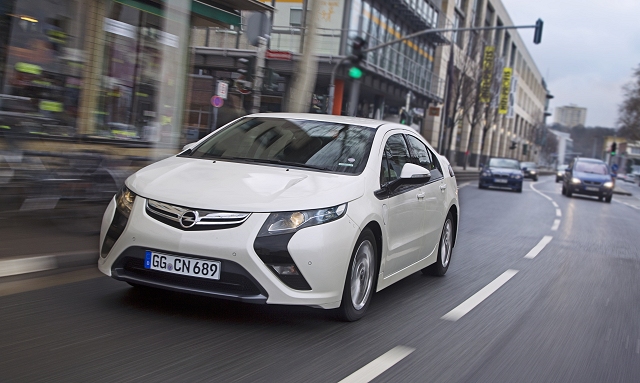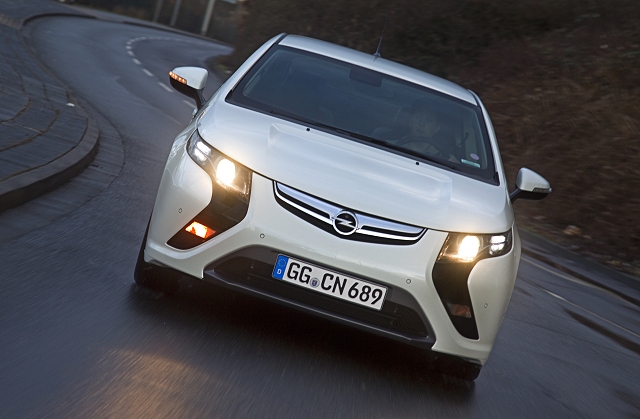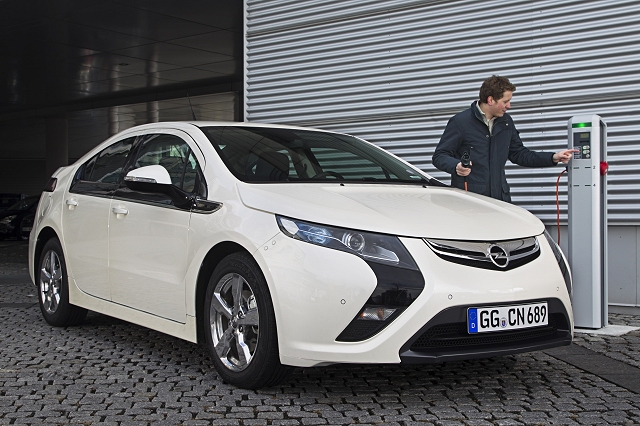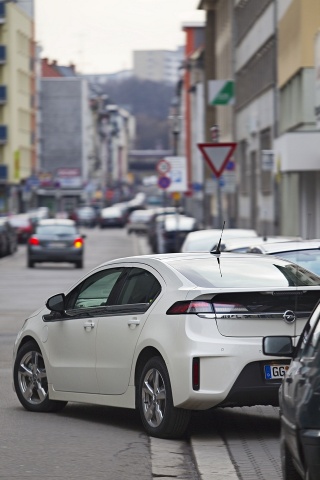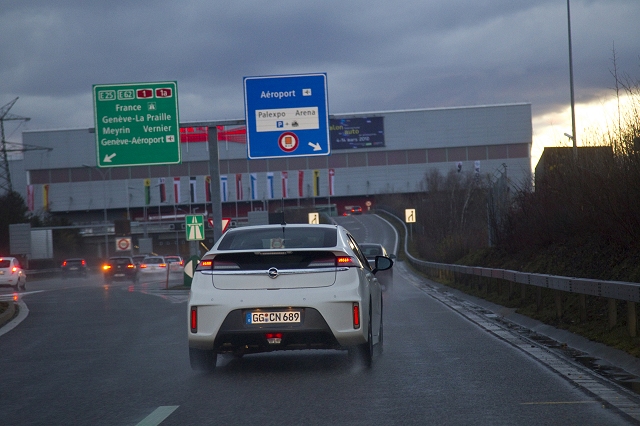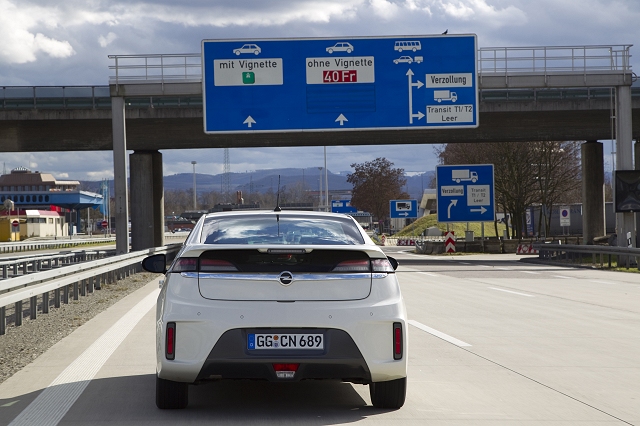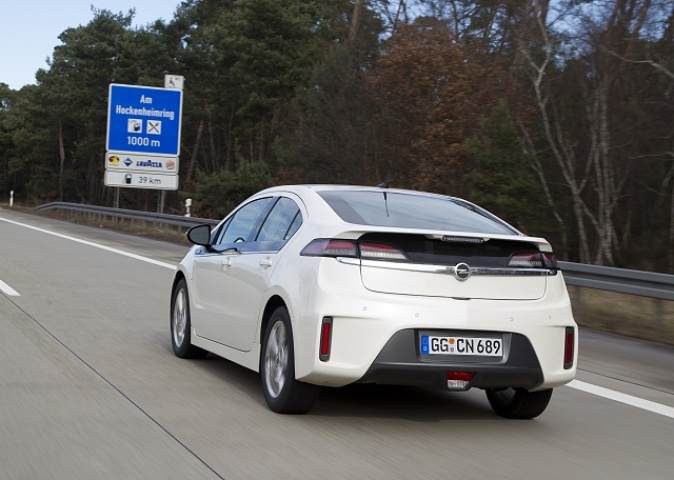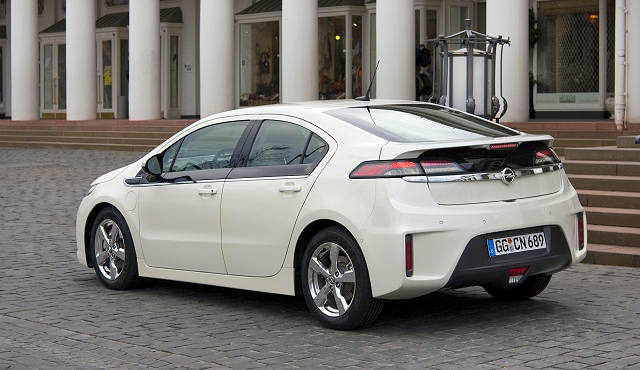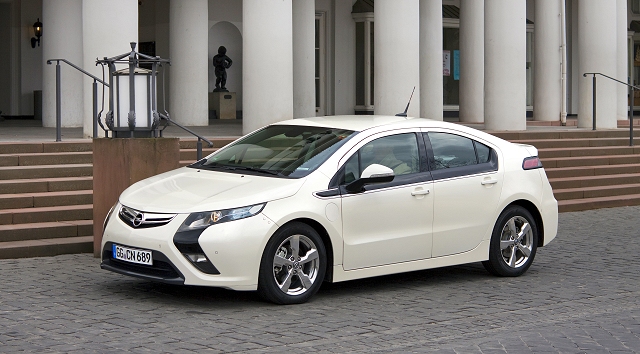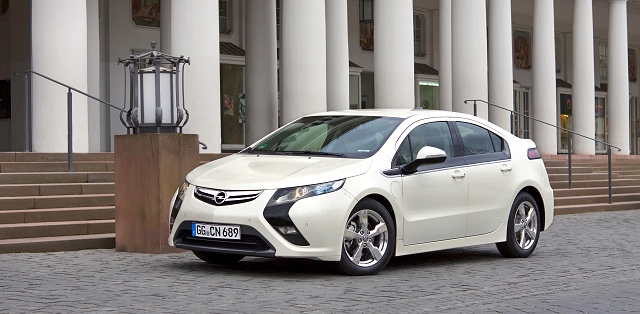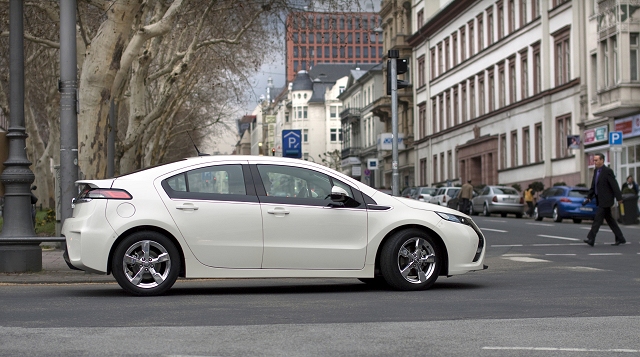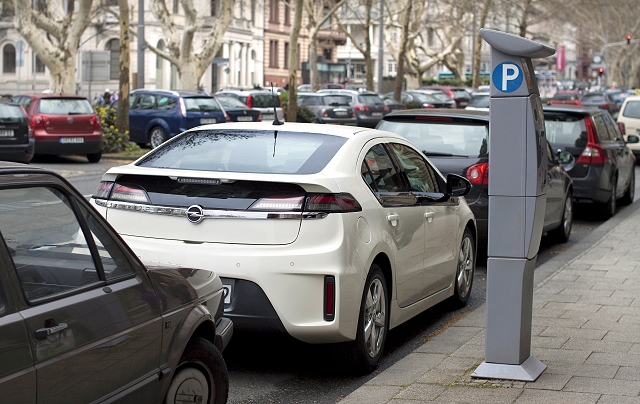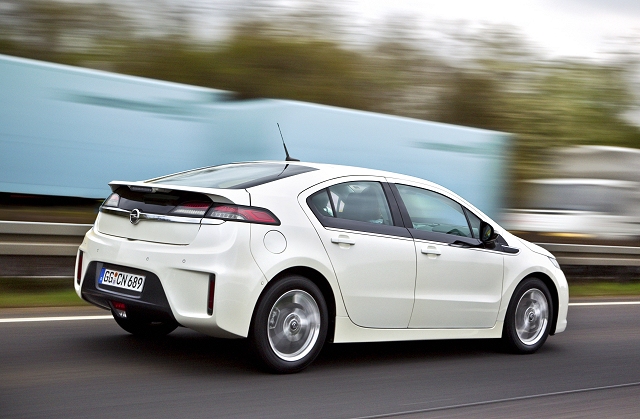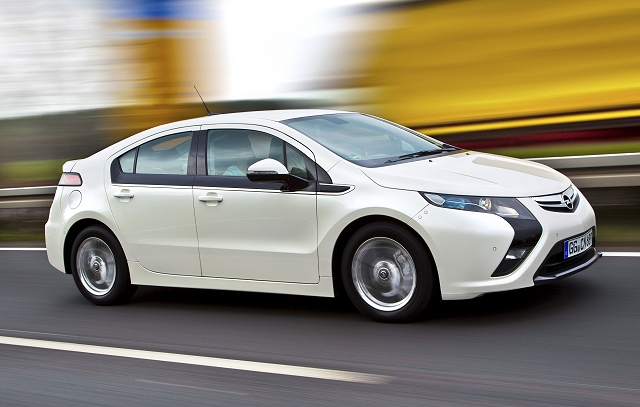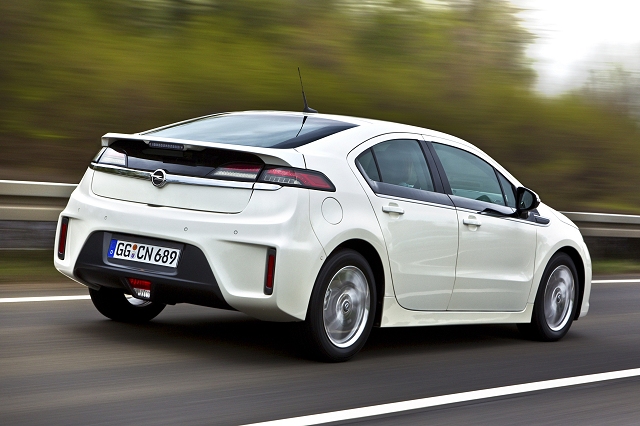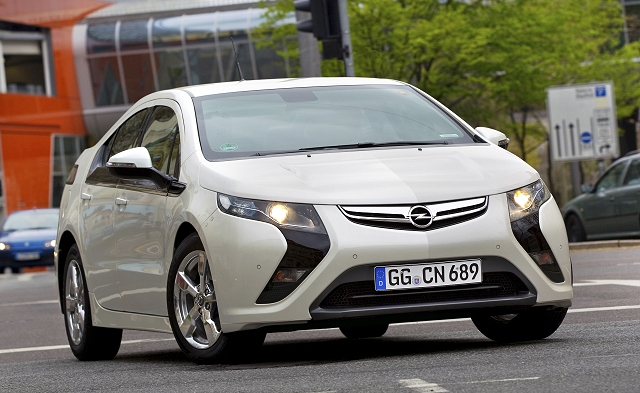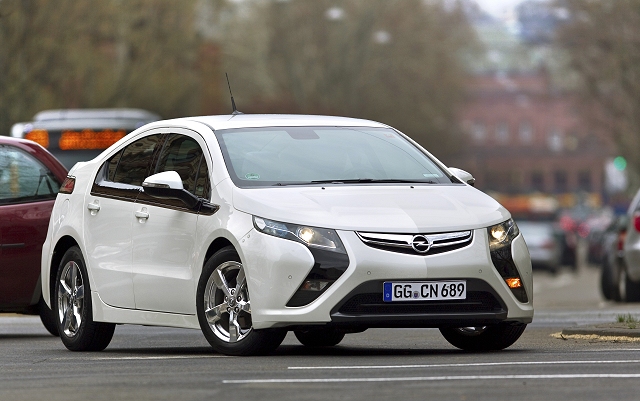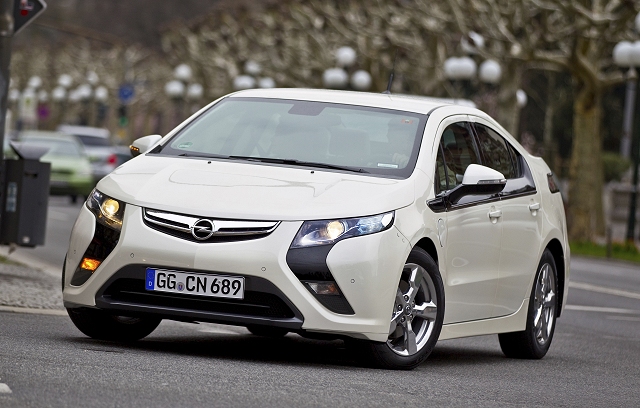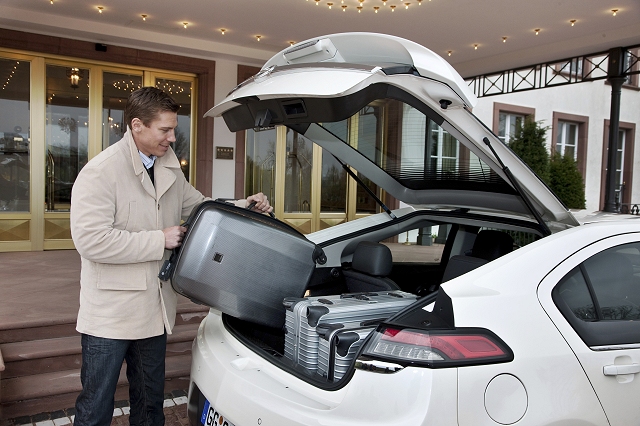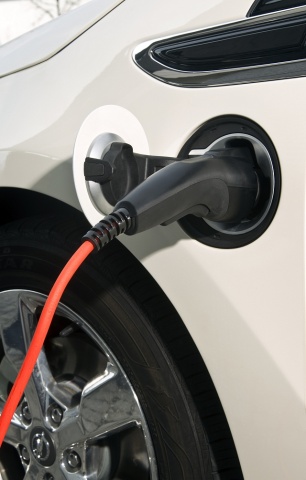Overall rating: 3/5
The technologies employed in the Ampera and the way they seamlessly integrate with each other are truly impressive. These technologies are expensive however, meaning that, instead of competing with electric or hybrid cars like the Nissan LEAF and Toyota Prius, the Ampera goes head-to-head with low CO2 offerings from BMW and Mercedes-Benz.
In the metal 3/5
Opel's Ampera looks unlike anything else that wears its badge. The front end is dominated by distinctive boomerang-style headlights with integrated LED daytime running lights. The rear is a little less resolved with thin lights mounted high on the boot, but it is part of the aerodynamic design; as too are the 17-inch alloy wheels with integrated aero covers.
The interior is modern, stylish and suitably high tech without being too kitsch like some electric and hybrid offerings. Much of the switchgear comes straight from the Opel parts bin and will be instantly recognisable to anyone who has driven an Astra or Insignia. The centre console is unique to the Ampera and features touch-sensitive icons that work well enough but feel gimmicky. The Opel designers admitted as much, saying that, while it was felt the first generation car needed 'a touch of the future', subsequent Amperas may revert to conventional buttons.
Because the batteries are located in a T shape in the centre of the car the Ampera is strictly a four-seater, but space is generous. At 300 litres the boot is also spacious for a car of this type, but family buyers may still find it small.
Driving it 4/5
The high tech experience of the Ampera begins the moment you prod the start button, as you are met with a pretend charging up sound. After that the car settles into an eerie silence with wind and road noise will supressed.
Unlike conventional hybrids, which rely on their petrol or diesel to supplement the electric motor under acceleration, the Ampera delivers all 150hp and 370Nm of torque from its electric powertrain. Despite its 1,723kg bulk the Ampera is also impressively quick; hitting 100km/h in nine seconds.
Opel has successfully argued that the Ampera is not a hybrid in the accepted sense and is instead an electric car with a range extending engine. This is due to the fact that the 85hp 1.4-litre petrol engine never directly powers the wheels. When called upon, and only ever after the stored electricity has been depleted, the engine acts as a generator to recharge the battery, meaning propulsion always comes from electricity.
The switch between the two modes is highlighted by a display on one of the two LCD screens in the cabin. Noise from the engine bay is well suppressed and other than a slight vibration and a gentle hum you would be hard pressed to know when the engine is running.
The Ampera takes between four and six hours to charge from a domestic outlet (four hours if you have a dedicated charging point) and from a full charge we covered 74 kilometres before the petrol engine kicked in. With a test route that was just over 100 kilometres long, and comprised of motorway, town and country driving, we used 1.5 litres/100km (188mpg) of petrol. Even on the return leg, with the battery long depleted, we averaged 5.0 litres/100km (56.5mpg).
Uwe Winter, Opel vehicle line director and chief engineer, spoke of driving his personal Ampera 'dynamically' to and from work every morning. We can only assume that German dynamics relate more to speed than handling as, while the steering is precise and the handling predictable, it is not exactly what you would call entertaining.
What you get for your money 2/5
This is where the Ampera falls down. While the €46,995 asking price does include heated leather seats, climate control, USB connectivity and alloy wheels, it also pushes it into BMW/Audi/Mercedes-Benz territory. Opel would prefer you to compare the Ampera to other electric and hybrid cars, but few buyers are likely to be making a choice between the €25,595 Nissan LEAF and €46,995 Ampera.
Worth Noting
When it is launched in September the Ampera will be available in either Positiv or Electron specifications. A lower spec 'Earth' model will join in 2013 that will have less colour options, no leather seats, parking sensors or reversing camera. Prices have yet to be confirmed but we suspect it will cost between €40,000 and €42,000.
Summary
If you like the idea of owning an electric car, but are put off by the restrictive range, then the Ampera could be just the car for you. Its range-extending powertrain represents the next step in electric cars and the ability to recharge at a domestic power point means you are not reliant on the charging infrastructure. If you can stay in pure electric mode fuel savings are huge but you will be a long time trying to recoup the initial €46,995 outlay.

